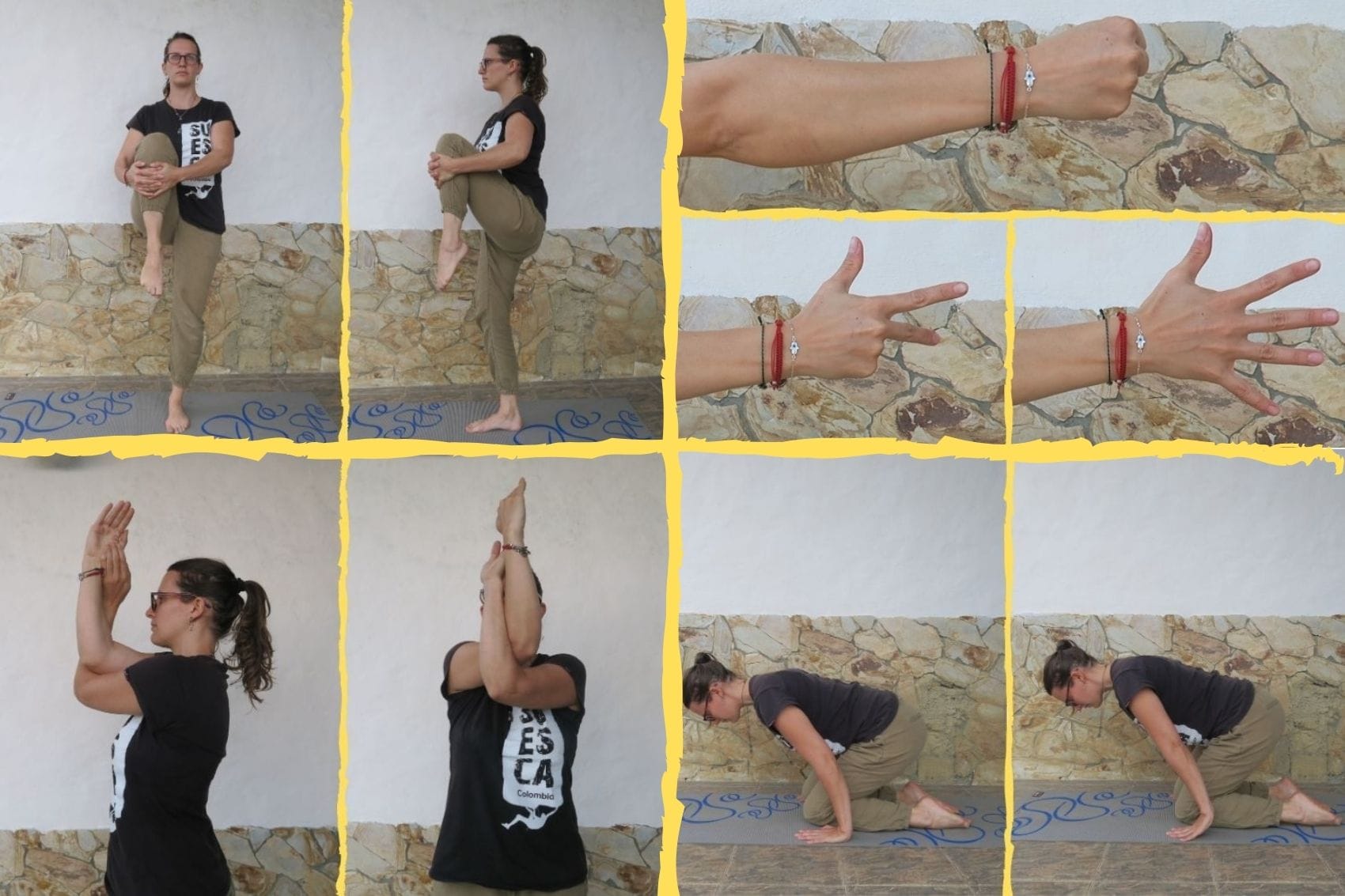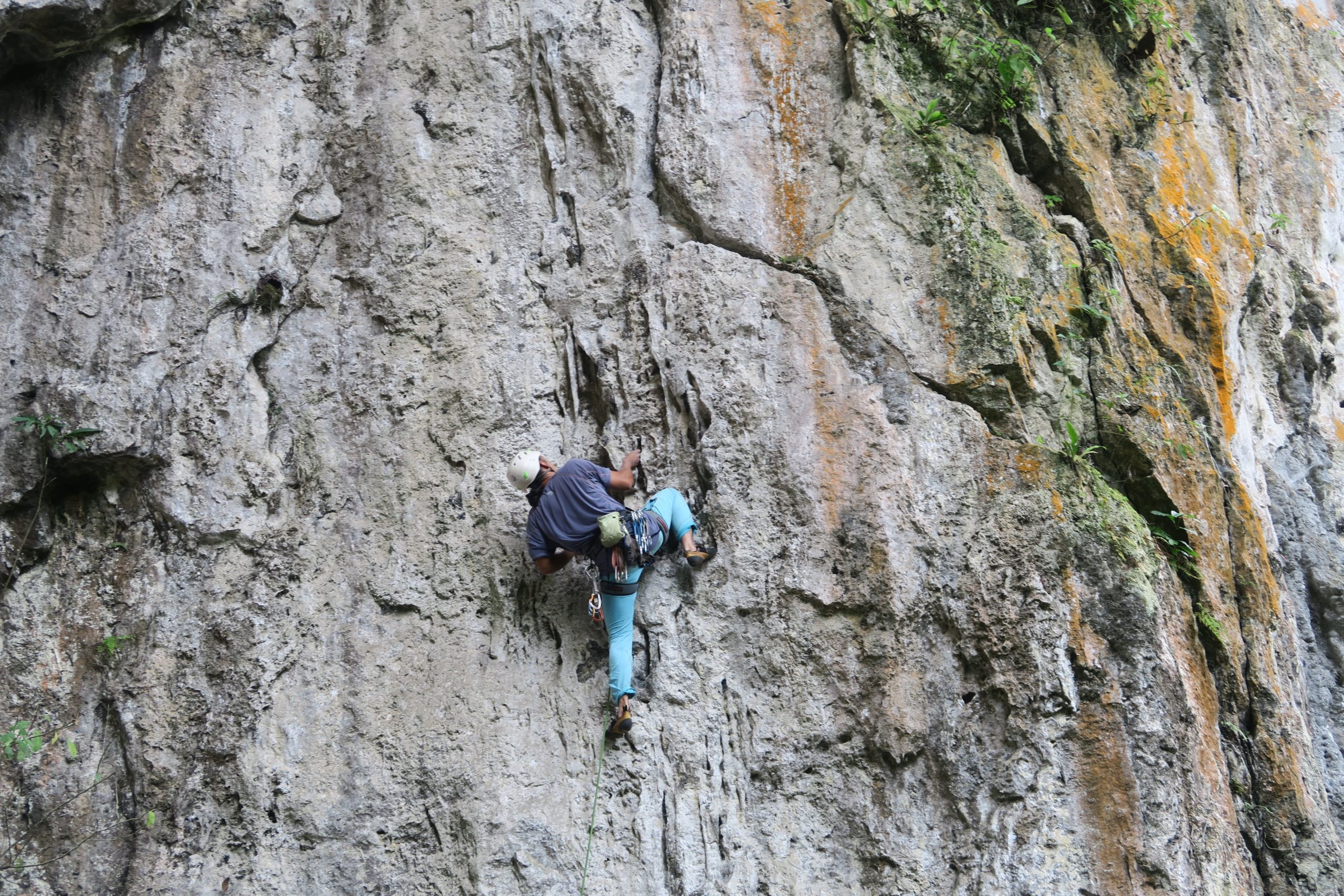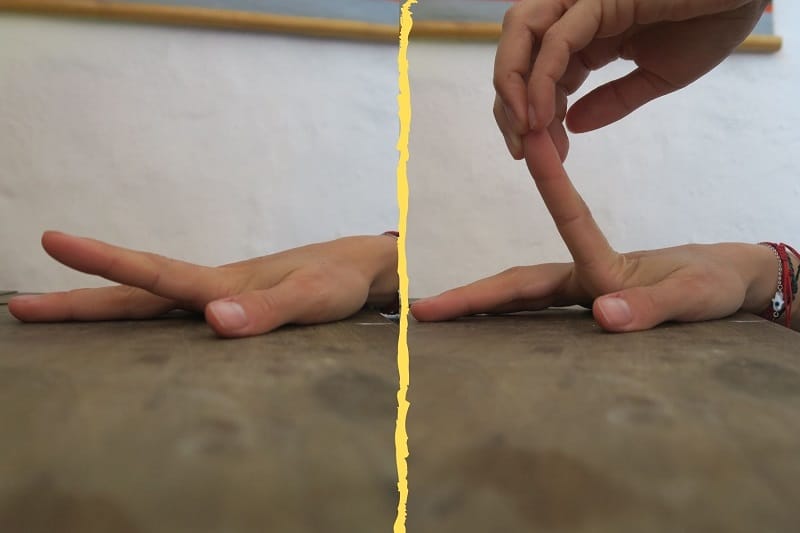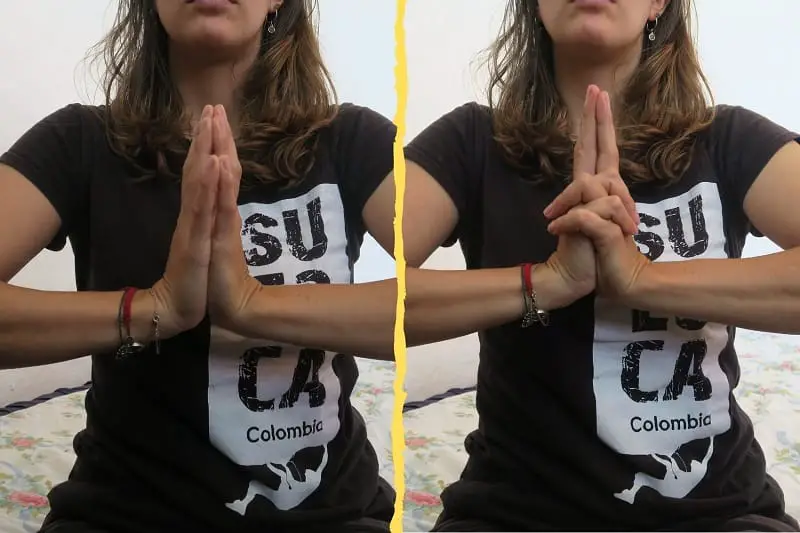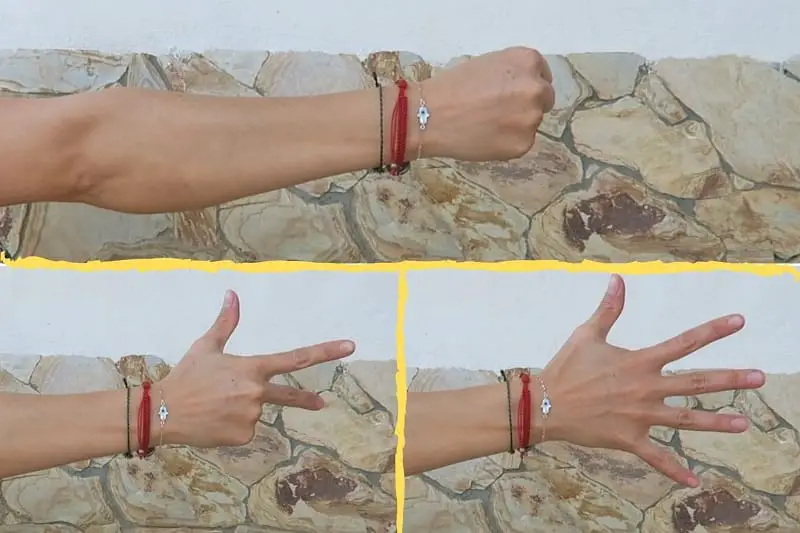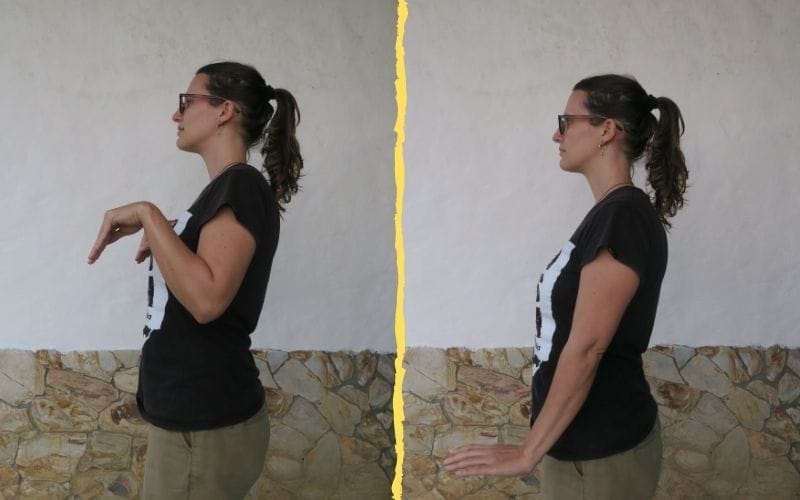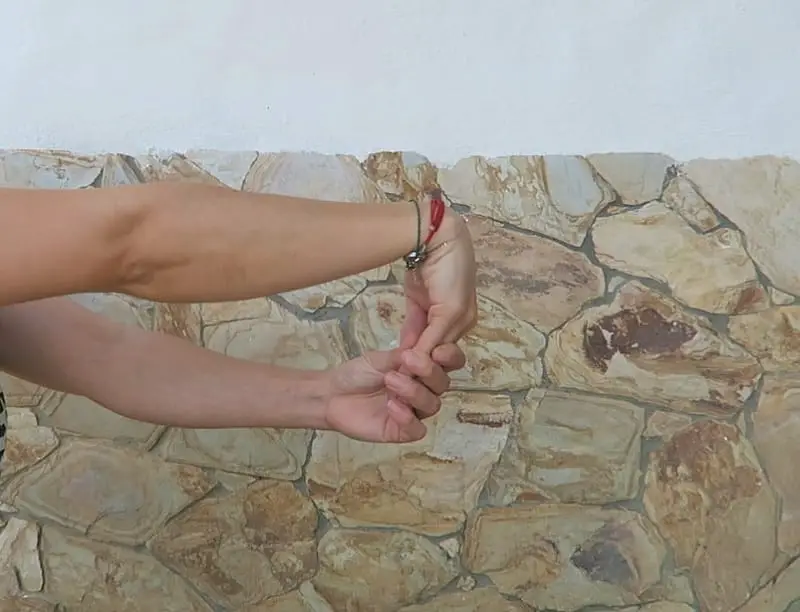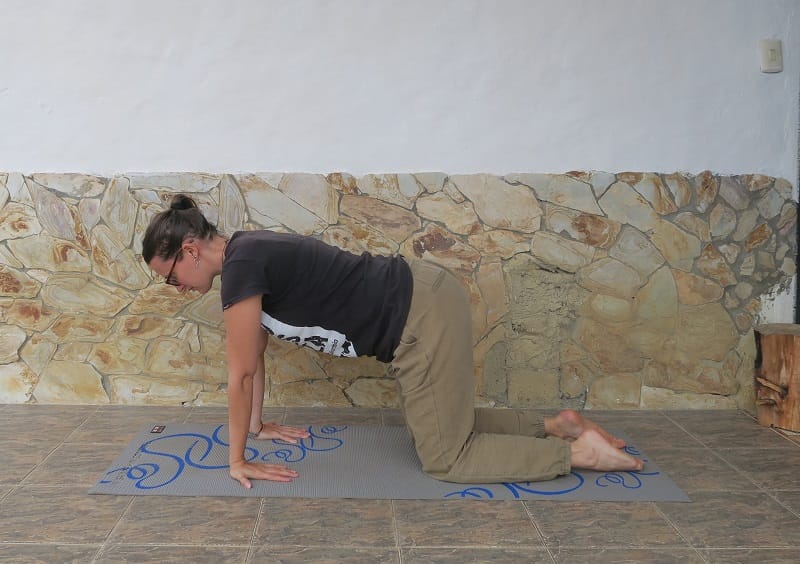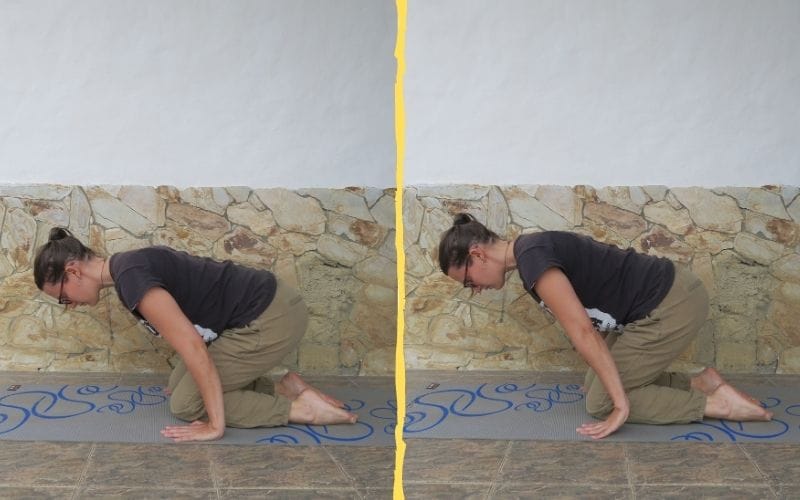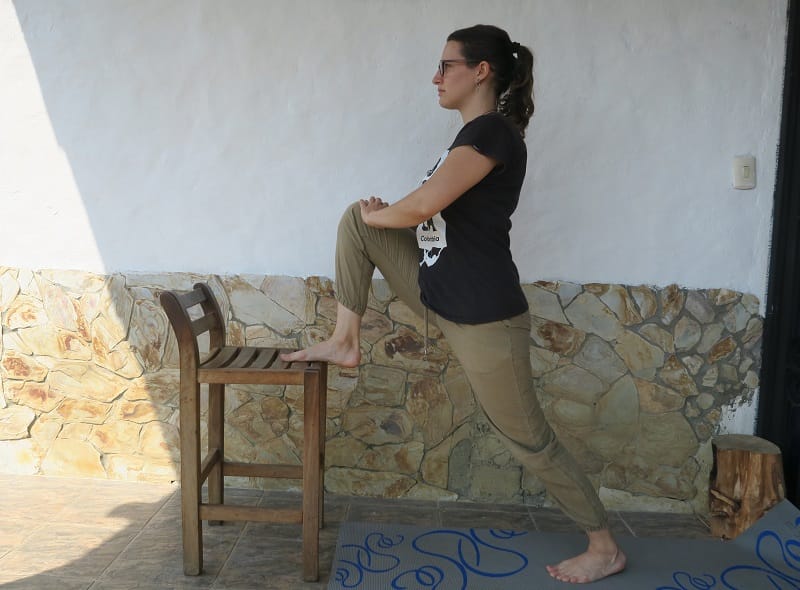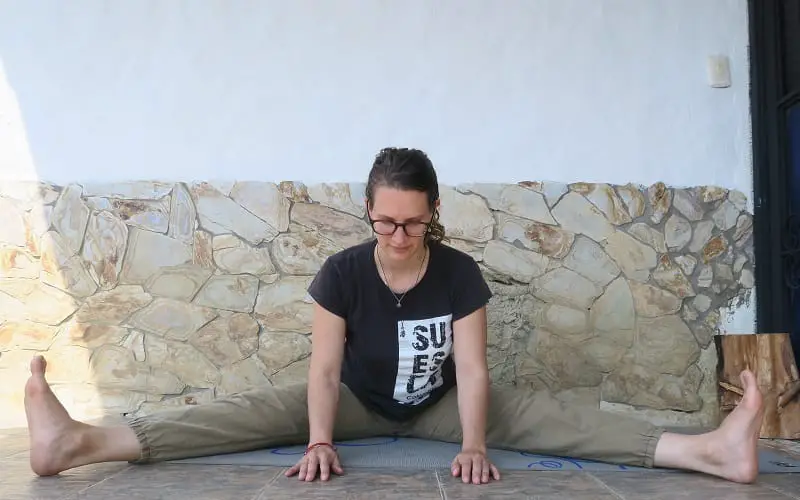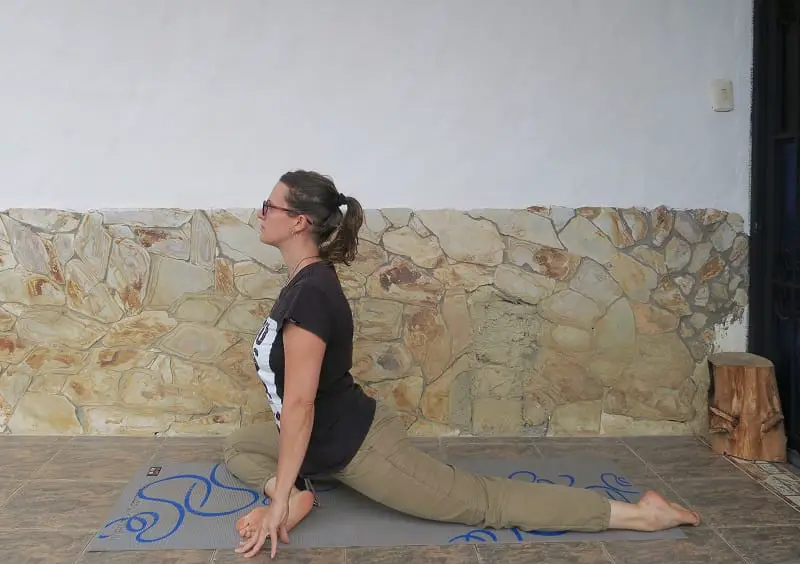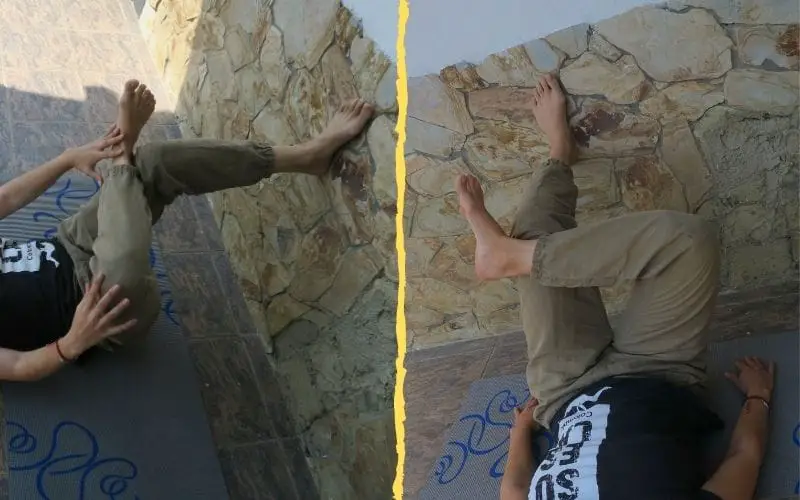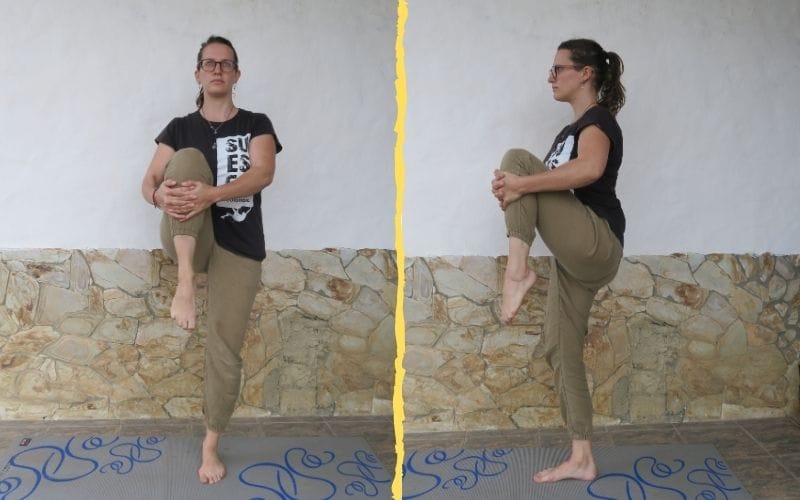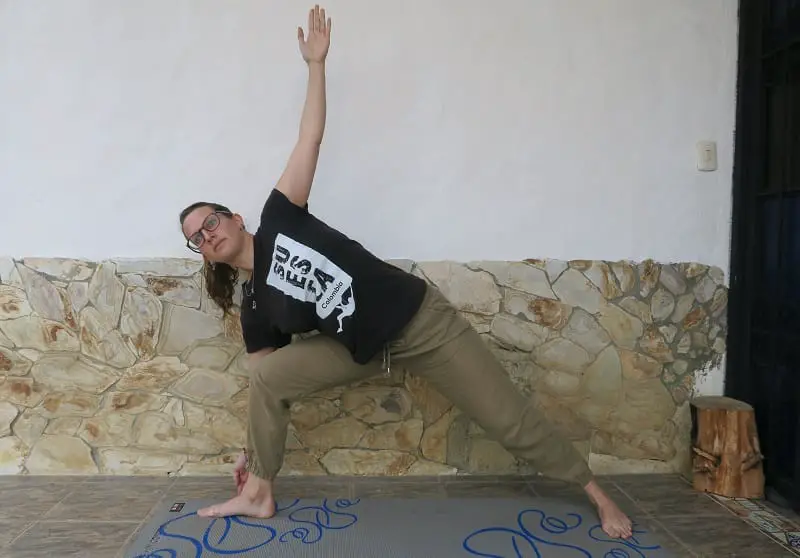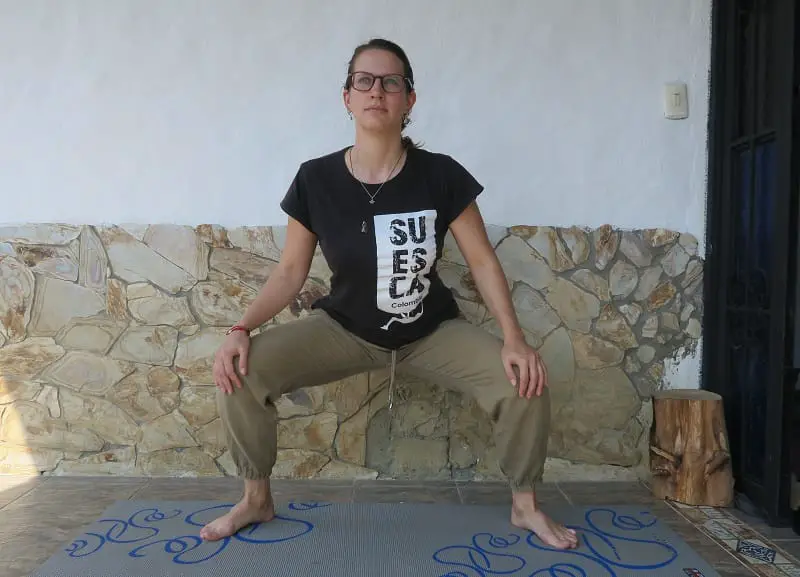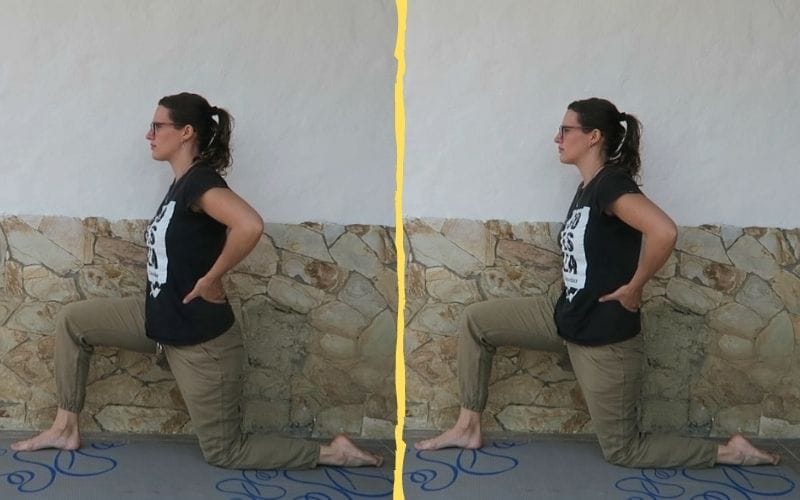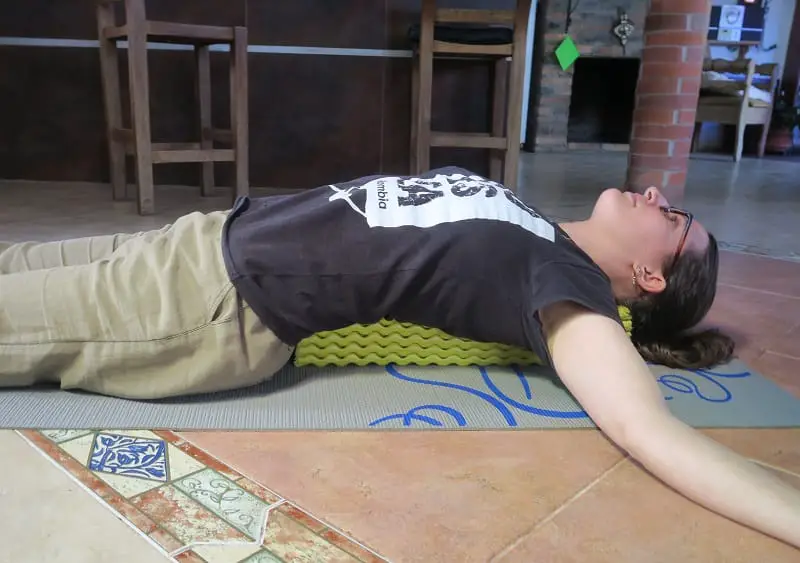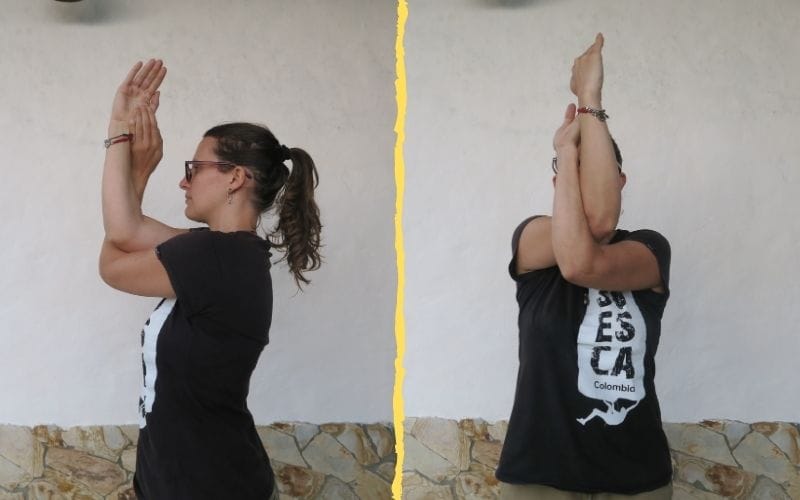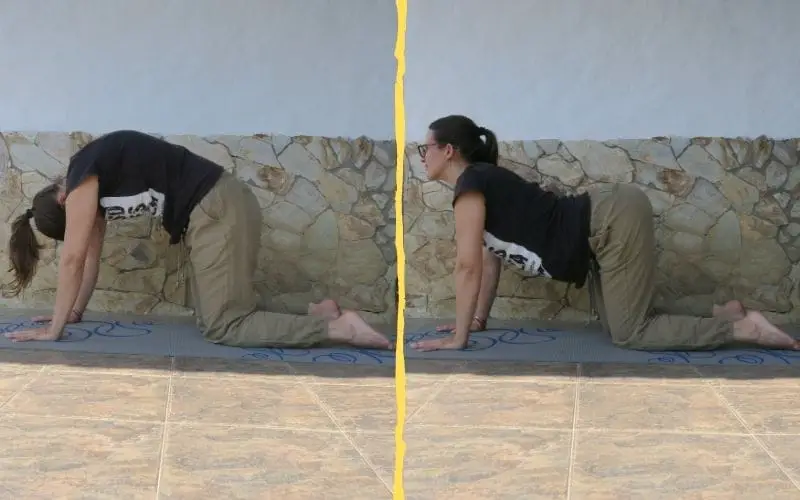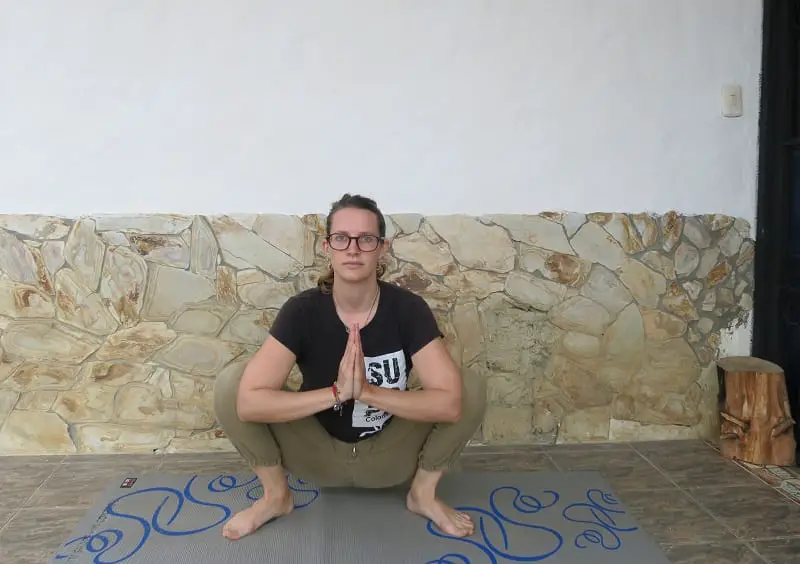You don’t have to be a super-yogi to do some stretching before your next climb and in this article we will explain why it is worth stretching before and after you climb.
We will also give you some good tips on the best exercises! Because whether you are a beginner or seasoned pro, stretching should be part of your climbing routine.
Should you stretch before climbing?
Yes! But most of us don’t.
The more experienced you are, the less stretching you need before and the more after climbing. Your muscles are already more used to the exercise, so a shorter warm up is fine, but stretching after climbing helps with recovery, no matter your level of experience. So, a short dynamic stretch before your climb to warm up your body and a longer, static stretch afterwards is ideal.
Why is stretching good for rock climbing?
Stretching before and after your climbing session will not only improve your performance while on the rock or wall, but is also an important factor in injury prevention.
Your muscles get stronger if you stretch them on a regular basis and stretching prevents them from tightening up over time. This could put strain on the joints and tendons, making them more prone to injury. It also increases flexibility which will improve your technique!
Injury prevention
Climbing injuries are either chronic injuries from overuse of certain muscles or joints, or acute, traumatic injuries mostly due to a fall. To prevent injuries, preparation is important.
Warmed up muscles, joints and ligaments allow you to flow through extreme movements or to hold a position without getting tired too fast. This is why a dynamic stretch to warm up the most important muscle groups is essential.
After or in between climbs, allow your body to cool down and recover. This is where slower and static stretches play an important role and keep your muscles flexible and smooth.
Flexibility and endurance
Being flexible helps to improve your climbing because a greater range of movements allows for more creative moves and better technique. Stretching on a regular basis can increase your flexibility, which makes your body more supple, making climbing moves easier, more effective or more available to you in the first place!
Different Types Of Stretching For Rock Climbing
We already mentioned that there are two different types of stretching: Static and Dynamic. But before we begin to explain, let’s just drop in a side note that these are some general recommendations, not medical advice.
If you have any chronic or recurring muscle or joint pain, please take extra care or consult with your doctor or physical therapist.
Dynamic stretching for rock climbing
Dynamic stretches are a form of warming up your body before you exercise. In this form of stretching, you move within the position up to a comfortable range.
These movements should always be controlled and help to loosen and activate your muscles and lubricate the joints. They stimulate blood flow to muscles, tendons and ligaments which helps to prevent injury.
Static stretching for rock climbing
After or in between climbs, you should give your body the chance to cool down and recover. Static stretches are a slower way of stretching, where you slowly move into the position up to a challenging, but not painful limit and hold it there for 15 to 30 seconds.
This contributes to the reparation process of your muscles and improves flexibility. These should be done while your muscles are still warm. Breathe deeply and with each breath, you can sink into the stretch a little deeper, as long as you don’t feel any pain.
Different Stretches For Rock Climbing
Now, let’s look at some stretches that you can do before and after you climb to keep your most important muscles and joints in top shape. Comfort is a big factor in how well you climb, so make sure to warm up properly, use comfy shoes and let’s get sending.
We have divided the stretches below according to the most important body parts while climbing. Starting at the fingers and wrist, we will work our way through common problem areas like shoulders and hips, which are often neglected.
The lower back and hips should not be underestimated when it comes to their importance in climbing, foot technique and balance!
Stretching fingers for climbing
1) Finger lifts
Lay your hand flat on a table, lift each finger up individually, first by itself, then stretch gently if you feel tense. This helps to increase the range of motion.
2) Prayer finger drops
Put your hands together in a praying position in front of your chest with your fingers spread apart. Press your palms together and keep your elbows winged out, your forearms parallel to the ground.
In pairs, drop your fingers down on the back of the opposing hand. This helps to lubricate the finger joints closest to your palms and stretches the muscles in your fingers and hands.
Hand stretches for climbing
1) Fist unfurl
Make a fist with an outstretched arm and unfurl each finger one by one to warm up your hand muscles.
2) Wrist mobility
Begin with your elbows and wrists flexed, then start to extend your elbows and wrists downwards simultaneously. This stretches the tendons in your elbows and wrists, while warming them up with the movement. This is a dynamic stretch to prep your ligaments and joints for action!
Forearm stretches for climbing
The muscles in your forearm are important for your grip strength, so stretching them should be a priority. It is important to stretch both sides of your forearm, both the topside (extensors) and underside (flexors).
1) Forearm Extensor stretch
Stretch your right arm out in front of you. With the left hand, bend your right hand down so your fingers point towards the ground. This stretches the extensors of your forearm.
2) Tabletop forearms flexion stretch
Start in a tabletop position with your knees below your hips and your hands below your shoulders. Turn your fingers backwards toward your knees to stretch the inside of your forearms. You can intensify the stretch by shifting your weight slightly backwards.
3) Forearm flexors
Start on your knees and place your hands palm down, next to your knees. Gently learn forward with your palms flat against the ground until you feel a stretch.
There is a variation to this stretch if you lift your palms slightly, intensifying the stretch down towards your hands.
Leg stretches for climbing
When climbing, most of your force should come out of our legs, so it is important not to neglect the hamstrings and glutes. Strong and flexible hamstrings and glutes help you to step higher, kill that heel hook and improve your footwork.
Hamstrings
1) Standing Hamstring Stretch
Stand with the right foot raised onto a table or chair. Keep the left leg straight behind you and lean your chest into your right knee. Repeat on both sides.
2) Sitting split
Stretches the hamstrings on both sides at the same time. Sit on the ground with your legs stretched out on either side.
Lean forward towards the ground while maintaining your back as straight as possible. Do this by focusing more on moving your belly button forward than your shoulders. Take deep breaths and try to sink deeper into the stretch every time you exhale.
Glutes
1) Pigeon
Start sitting on your knees. One leg goes out straight behind you, bending the other one in front of you. Ideally your knee should be bent at 90 degrees.
If this is too much pressure on your knees, there is an alternative:
2) Glute wall:
Lie flat on your back with your feet against a wall so your legs are in a 90 degree bend. Cross your foot over the other knee, making sure that your ankle is past the knee. Flex your foot to keep your knee engaged and stable. You should feel a pull on the outside of your hip and back of your leg.
3) Knee pull up
Standing with your feet hip distance apart, lift your leg and hug your knee tightly against your chest until you feel a stretch.
Hip and groin stretches for climbing
Having flexible hips not only means a bigger range of motion, but also signifies that you can put more weight on your feet, no matter their position.
1) Hip rotations
Standing on one foot, lift your knee up and open it up to the side.
2) Side Angle Pose
Start standing straight, then step your left foot out about a metre. Bend your right knee and bring your right thigh parallel to the floor if possible. Lower your right arm towards the floor, bringing the right side of your torso close to your right thigh, trying to touch the ground outside your foot, your left hand goes towards the sky.
This stretches your hips, groin and shoulders at the same time.
3) Wide squat
Stand with your feet more than shoulder width apart. Bend your legs until your knees are bent at 90 degrees with your feet pointing outward.
4) Hip flexors
This exercise is not just a good stretch for climbers, but anyone who spends a lot of time in an office chair. Many of us who spend a lot of time sitting down tend to tilt our pelvis too far forward.
Go down on one knee and put your hands on your hips. Imagine you have a bucket of water in your pelvis. With your thumbs facing forward on your hips, rotate your hips backwards, so the imaginary bucket is now pouring water out the back.
Make sure your position is straight and the stretch comes from the hip rotation, not from leaning forward. This exercise strengthens your core and can relieve pain in the lower back.
Shoulders and back stretching for climbing
Many climbers tend to hunch forward with time, because they don’t stretch their upper body out enough.
1) Chest opener
Lie flat on your back with a rolled-up blanket, yoga block or climbing rope under the middle of your spine and let your arms fall down to either side. This opens up your chest muscle.
2) Rhomboids / Eagle arms
If you have a tight back, this exercise is perfect to stretch out the muscles between your shoulder blades. Cross your arms in front of you with your elbows bent 90 degrees. Twist them together so your palms face or touch each other.
Move your arms up or around to intensify the stretch and get rid of any sticky spots.
Yoga Positions For Rock Climbing
There are a lot of different yoga styles, but if you are looking for a class that focuses on stretching, look for Yin or restorative yoga classes. These usually focus on slower movements and hold poses longer, making subtle adjustments and focus on the breath.
Yoga also helps with body awareness, strength, balance and breathing, all of which are essential for good climbing!
Here are some easy yoga poses you can incorporate into your stretching routine.
1) Downward facing dog
Start in a tabletop position with your fingers spread apart, distributing your weight evenly across your hands and knees. Start to straighten your legs, lifting your tail bone in the air.
It doesn’t matter if you can’t keep your legs straight, what is more important is that your shoulders and back form a straight line.
Your neck should be relaxed but keep the muscles engaged by looking at your feet while trying to maintain space between your shoulders and ears. If you can, straighten your legs and press your heels into the ground. Press your index finger into the ground for more stability.
This strengthens and stretches the shoulder muscles, the hamstrings, claves, hand and achilles tendons.
2) Plank pose and side plank
Come into a plank pose from the downward dog with a neutral pelvis, without dropping your hips or lifting them too high. Imagine you are lengthening your entire spine. Keep your shoulder blades apart and feel your fingers pressing into the ground.
From the centre, you can now move into a side plank by twisting to the side, stacking your feet on top of each other and reaching to the sky with your other arm. Look straight ahead and don’t collapse onto your shoulder but keep your shoulder blades wide apart.
This strengthens your spine, core, external obliques, stabilises the dorsal spine and shoulder girdle.
3) Seated twist
Come into a seated position with your legs straight ahead of you. With a straight back, cross your right foot over your left knee and place it flat on the ground. Then bend your left leg, so your left heel comes toward your right hip. Lift your right arm up and place it behind you, bringing your spine into a gentle twist.
Try to maintain your back straight and twist out of the base of your spine and don’t force the rotation with your arms. Place your left elbow on the outside of your right knee to maintain the twist without creating pressure on your spine.
4) Cat and cow pose
Start in a tabletop position again with your fingers spread flat on the mat. Inhale and start to look forward, let your belly sink and your tailbone point up. This is the cow pose.
When you exhale, start to look down, stretch your neck and round your back to come into the cat pose.
This warms up your spine and stretches tight forearms. Repeat at least three times.
5) Standing forward bend
Standing with your feet hip distance apart, cross your arms and grab your opposite elbows, slowly start bending down and lift your tailbone towards the sky. You can bend your legs if that is more comfortable.
Relax your spine and lengthen your torso and neck. Let your bodyweight pull down your head and neck.
Breathe deeply and sink more into the stretch with every exhalation. Stand up with an inhalation and lift your arms above your head, stretch and bring them down to your sides on the next exhalation.
6) Tree pose
From a standing position, shift your weight to one foot and find your balance. Lift your foot up and place it against your other ankle. Start lifting the foot up towards your thigh. If that is too high, rest it lower on your leg but not directly on your knee joint.
Put your hands in a prayer position in front of your chest. Pull your shoulder blades back and down, engage your inner core muscles by trying to hug your organs with your ribs while also lengthening your spine.
7) Garland pose
A good stretch for your groin that also includes ankle mobility, is the garland pose. Start standing straight with your feet slightly turned outwards. Start to lower into a squat position and continue to go as low as you can.
Ideally your heels should stay on the ground but don’t worry if they don’t. Press your elbows against the inside of your knees to open up your hips and increase the stretch.
8) Cobra pose
Lie down on your belly with your hands next to your shoulders, palms on the ground. Lift your head and chest off the ground.
Draw your shoulder blades together and engage your back muscles. Rise your torso higher into a backbend, draw your shoulder blades down and try to curve through your upper back rather than lumbar spine.
How to stretch after climbing
Like we said above, after you climb you should allow your body to properly cool down and give it a chance to recover. You can assist your muscles by doing static, slow stretches after climbing, while your muscles are still warm.
This will help with recovery and improves flexibility. The most important areas here are chest, back, hips, hamstrings and forearms. These are the slower stretches above, that you should hold for at least 30 seconds while breathing deeply.
Further reading
Some more interesting info on indoor rock climbing weight limit or finger strength.
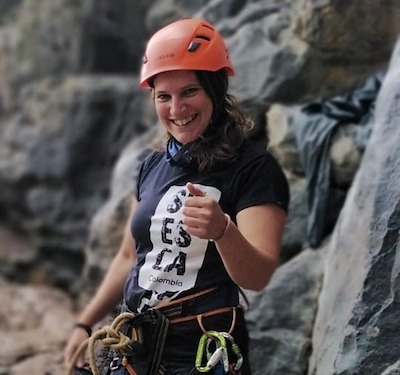
Hi there, I am Mirjam and have recently discovered rock climbing for me while backpacking in Colombia. Originally from Switzerland I currently live in Venezuela and work as a freelance writer and translator. I have always loved being in nature and the mountains and am stoked to explore more of the world’s best climbing in the years to come!
You can find me at @mirigoesround or www.bosstranslations.com

